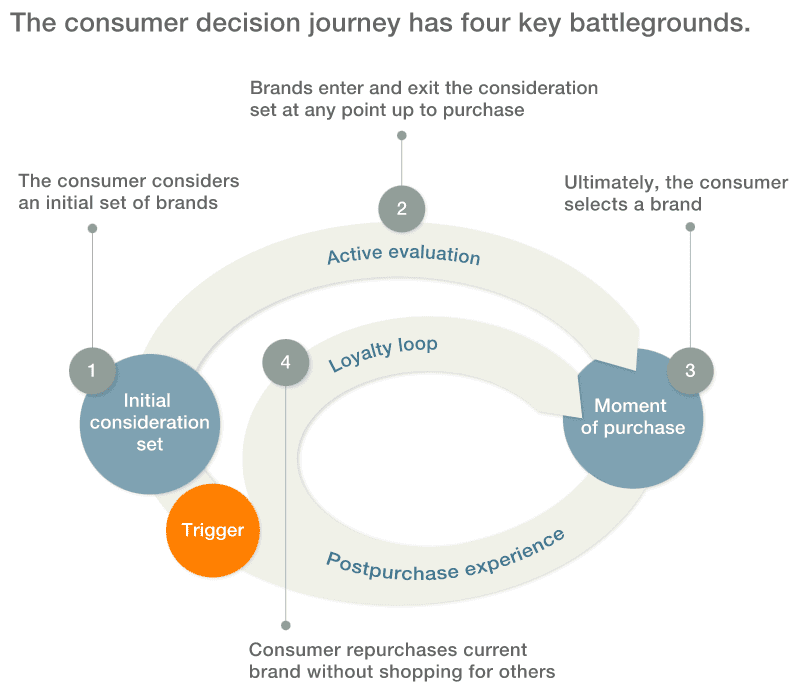7 post-purchase message ideas you can copy
Post-purchase text messages improve customer experience, reduce the number of customer complaints, and increase customer retention. Here are seven you can send today.

Post-purchase text messages improve customer experience, reduce the number of customer complaints, and increase customer retention. Here are seven you can send today.

Getting new customers is a big deal. It also costs a lot of money.
While ads, email marketing, and word of mouth are all essential to building a successful marketing engine, ignoring customer retention means you’re essentially flushing money down the drain.
It’s why you need to send post-purchase text messages to your customers.
They improve customer experience, reduce the number of customer complaints, and increase customer retention. When you add that all up, it means your bottom line benefits too.
Loyal customers are hard to come by. The leading management consulting firm McKinsey & Co. found that they make up only 13% of shoppers.
Another 29% are “vulnerable repurchases”–people who research other brands before ultimately returning to the familiar. The remaining 58% buy from you and then disappear.

Source: McKinsey
Most companies invest heavily in the consideration and evaluation stages and neglect the post-purchase experience and loyalty loop.
As the name implies, post-purchase messages are ones that you send only to customers after they purchase. Although post-purchase texts serve practical purposes, they also help you build stronger relationships that ultimately contribute to an increase in consumer loyalty.
You might be wondering, why send text messages and not post-purchase emails?
In a study from Registra, half of those aged 18-34, and the same again of those earning $100K+ per annum, said they would prefer to receive information about service and warranty, as well as product setup information and tips, on their smartphone.
Of consumers across all ages and earnings, 35% stated a preference for mobile contact post-purchase.
If you’re still not convinced, here are a host of other reasons to choose text message campaigns over email campaigns.
To send post-purchase texts like an order confirmation, you’ll need to connect your e-commerce store to an SMS marketing software like SimpleTexting.
If you’re interested in learning more about SMS marketing and e-commerce, then we recommend you check out these two specific resources:
In both guides, we explain how to collect numbers at checkout and trigger SMS messages based on customers’ specific actions.
There are a ton of post-purchase texts to choose from, depending on your purchase process, products, and customers. Here are seven of the most common.
In a brick-and-mortar store, you pay and walk away with your product. If the cashier didn’t say thank you after you pay, you’d probably think to yourself, “They were rude!”
While buying online and buying in a physical store are different experiences, the importance of a simple thanks applies to both mediums.
You could even argue that because of the delay between hitting the buy button and receiving and using the product, customers crave reassurance even more.
Saying “thank you” to your customers gives them a sense that you care about the experience you provide.
Plus, in some cases, people screenshot their thank you texts and share them with friends and family–often to brag about their purchase. So, it’s also an opportunity to reach new customers.
In your thank you text, you can do three things:

These are the essential post-purchase texts because they keep your customers in the loop.
They also get in front of incoming customer support issues around delivery updates, and standard questions like, “Where is my delivery?”
The shipping confirmation text should feature product details and tracking information, and if possible, another “thank you for your business” message.
And while these messages can seem very functional, they must reflect your brand voice.
We recently wrote about customer onboarding best practices. One of our five tips was never to assume how much customers already know about your product.
These kinds of post-purchase messages improve your onboarding experience, but they also signal to customers that you care about them even after the purchase is complete.
These instructions and tips can range from style tips for clothing, to feature demonstrations, to instruction videos. Here’s an example of a text message that provides instructions on how to assemble a bike.
You can use our autoresponder feature to send a series of tips and tricks. For example, if you sell bikes online you could provide information on bike maintenance, links to useful articles, and training plans.
Asking for feedback in your post-purchase follow-up shows that you care by wanting to improve the product and experience for your customer. They will feel included and that their opinions and ideas are essential to you.
Beyond that, understanding what your customers think of buying from you will help your business thrive.
You can ask your customers to leave a review on a third-party website or ask them to complete a survey. It’s important not to make it seem like you just want a star rating–you want them to provide details about the experience.
If you find that your response rates are low, you can always entice people by providing value in exchange, e.g., a code for 10% of their next purchase.
We recommend sending this text after your customers have been using your product or service for about a week.
Once someone buys from you, you know what they’re interested in.
If someone buys a pair of cycling shoes, chances are they’re interested in cycling.
You can take advantage of this in your post-purchase messages by providing product recommendations based on what you know about existing customers.
Within SimpleTexting, you can group subscribers based on shared traits, then send out highly targeted text message campaigns to drive repeat purchases. Using the example above, we could create a segment called “Cyclists.”

Then you can send a targeted message.
We wrote about using SMS to prompt renewals and the growth of the subscription economy. But even if you don’t offer a subscription service, most products need replacing, refilling, or maintenance.
If the products you sell typically have a reasonably short lifespan, you should set up post-purchase follow-ups.
For example, imagine you sell vegan pet food–and a bag typically lasts a month. After a month, you can send a text asking whether they’re running low. It’s also a good idea to reinforce your unique selling point.
You can send a message like this:

These kinds of post-purchase messages work well for a range of industries, from office supplies to makeup.
Too few businesses ask for referrals. It’s a shame.

Source: Business2Community
Customer referrals are still among the most effective ways to boost customer retention and increase the number of new customers you convert. People trust their friends and family, so they’re more likely to try new products or brands if referred.
You should send customer referral requests by SMS because they come across much more personal than email. Be sure to capitalize on this by taking a personable approach to your referral requests.
These seven examples of post-purchase messages provide a good jumping-off point for your text message series. But that doesn’t mean you need to stop there.
Every industry and brand is unique, so we recommend you modify your approach accordingly.
Whatever you decide to send, keep it engaging, and full of value. If you do this, you’ll improve your retention rate and customer loyalty.
In a world where the fight for customers is heating up, it’s important to not lose sight of just how important that is.
Drew Wilkinson is the Head of Marketing at SimpleTexting. Drew has more than a decade of experience managing successful integrated marketing programs to build brands, raise awareness, and generate demand.
More Posts from Drew WilkinsonWhisker Seeker Tackle spotted a glaring gap in the market and turned it into a thriving e-commerce and wholesale business. Learn how entrepreneur Matt Davis leverages SMS text marketing services to drive sales.
ReadExplore the steps in helping your e-commerce business stand out. From increasing sales to improving customer relations, make it possible with SMS messaging.
ReadStart a text marketing campaign or have a 1-on-1 conversation today. It's risk free. Sign up for a free 14-day trial today to see SimpleTexting in action.
No credit card required